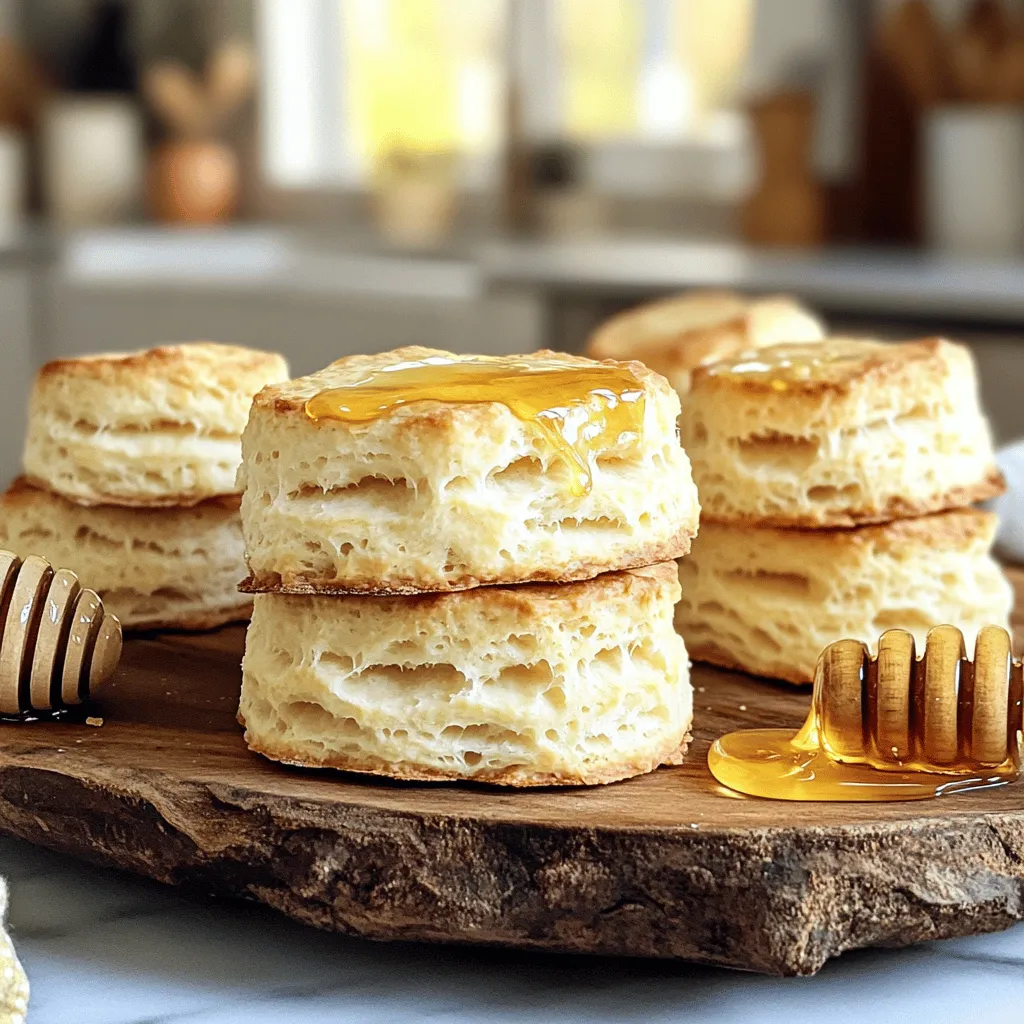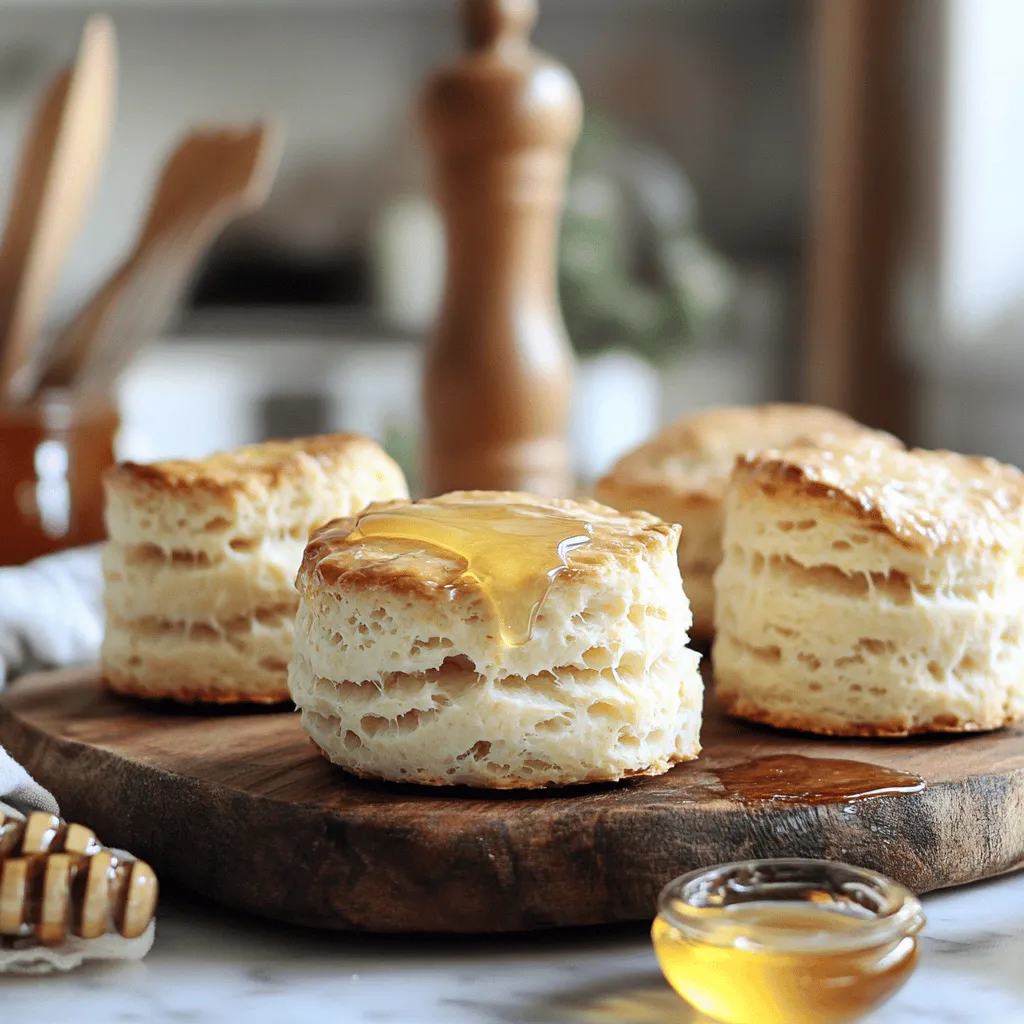If you love warm, flaky biscuits fresh from the oven, you’re in for a treat! My easy homemade buttermilk biscuits recipe will make your kitchen smell amazing and leave everyone begging for more. Perfect for breakfast or any meal, these biscuits are fluffy and delicious. Stick around to discover the simple ingredients, foolproof steps, and helpful tips to take your biscuit game to the next level!
Ingredients
List of Ingredients
- 2 cups all-purpose flour: This forms the base of your biscuits. Use a good quality flour for best results.
- 1 tablespoon baking powder: This helps your biscuits rise and become fluffy.
- 1/2 teaspoon baking soda: It works with the buttermilk to create a nice lift.
- 1 teaspoon salt: This enhances the flavor of your biscuits.
- 1/4 cup unsalted butter, cold and cubed: Cold butter creates flaky layers. Cut it into small cubes for easy mixing.
- 3/4 cup buttermilk, chilled: This is key for the biscuit’s tender texture. If you don’t have buttermilk, mix milk and vinegar as a substitute.
- 1 tablespoon honey (optional): This adds a touch of sweetness. Feel free to leave it out if you prefer plain biscuits.
Notes on Ingredient Substitutions
If you run out of buttermilk, you can use:
- Milk and vinegar (1 tablespoon vinegar mixed with 3/4 cup milk).
- Yogurt thinned with a bit of water.
For a richer flavor:
- Swap out the butter for cold shortening or a mix of both.
These simple swaps can help you make delicious biscuits with what you have at home.
Step-by-Step Instructions
Preheating and Prep
Start by preheating your oven to 450°F (230°C). While the oven warms, line a baking sheet with parchment paper. This helps prevent the biscuits from sticking. For measuring, use dry measuring cups for flour. Spoon the flour into the cup, then level it with a knife. This method ensures you don’t pack too much flour. Accurate measuring is key to fluffy biscuits.
Combining Dry Ingredients
Sifting your flour and dry ingredients is very important. This step adds air and breaks up lumps. It helps your biscuits rise better. In a large bowl, sift the flour, baking powder, baking soda, and salt together. Mixing these dry ingredients well ensures even rising throughout the dough.
Mixing Techniques
Next, you’ll mix in the butter and buttermilk. Cut the cold, cubed butter into the flour mix using a pastry cutter or your fingers. Aim for a texture like coarse crumbs. Then, make a well in the center of the flour. Pour in the cold buttermilk and honey if you want a hint of sweetness. Stir gently with a fork. Stop as soon as the dough comes together to avoid overmixing. Overmixing makes biscuits tough, not fluffy.
Dough Handling
When handling the dough, turn it onto a lightly floured surface. Knead it gently 4-5 times until smooth. Be careful not to press too hard. Next, pat the dough into a rectangle about 1 inch thick. Fold it over itself three times. This creates layers, which help the biscuits rise. Keep the dough cold; it helps the butter stay solid and creates flaky layers.
Cutting and Baking
To cut the biscuits, use a round cutter. Press straight down without twisting. This helps the biscuits rise evenly. Place the cut biscuits on the baking sheet, leaving space between them. Bake in the preheated oven for 10-12 minutes. Watch for a golden brown top. Once done, brush with melted butter if you like. Enjoy these homemade buttermilk biscuits warm.
Tips & Tricks
Achieving Light and Fluffy Texture
To make your biscuits light and fluffy, start with cold ingredients. Use chilled buttermilk and cold butter. Cold butter creates steam, which helps the biscuits rise. When you mix the butter into the flour, aim for pea-sized pieces. This step is key for that tender texture. Also, when you pat out the dough, don’t press too hard. Gentle handling keeps the layers intact, allowing for a nice lift during baking.
Common Mistakes to Avoid
One common mistake is overmixing the dough. When you overmix, the biscuits become tough instead of fluffy. Mix just until the dough comes together. Another mistake is mismeasuring ingredients. Always use dry measuring cups for flour and baking powder. Too much flour leads to dry biscuits, while too little can cause them to spread too much.
Using Tools Effectively
Using the right tools makes a big difference. A pastry cutter helps cut the butter into the flour. A round biscuit cutter creates clean edges, helping the biscuits rise evenly. Don’t forget parchment paper! It keeps the biscuits from sticking and ensures even baking. Use a baking sheet with a flat surface for best results. These tools will help you create perfect biscuits every time.

Variations
Flavor Add-Ins
You can make your biscuits more exciting by adding flavors. Cheese is a great start. Try sharp cheddar for a savory kick. You can mix in herbs like rosemary or thyme for a fresh taste. For a bit of heat, add crushed red pepper flakes. You can also include spices like garlic powder or onion powder for extra flavor. Each of these add-ins can change the taste of your biscuits in fun ways.
Alternative Serving Suggestions
Serve your biscuits with a variety of tasty spreads. Jams like strawberry or raspberry add a sweet touch. Honey is another great option, especially if you love a bit of sweetness. For a savory twist, try butter mixed with herbs or garlic. You can even serve them with gravy or soups. These pairings can turn your biscuits into a meal or a delightful snack.
Different Types of Biscuits
Explore different biscuit styles to keep things interesting. Cheddar biscuits are rich and cheesy. They pair well with soups or salads. You can also try rosemary biscuits, which bring a nice herbal flavor. If you’re feeling adventurous, make a sweet biscuit with cinnamon and sugar. Each type of biscuit offers a new taste and texture, making every meal special.
Storage Info
How to Store Leftover Biscuits
To keep leftover biscuits fresh, store them in an airtight container. This method keeps the moisture in and the biscuits soft. If you want to freeze them, wrap each biscuit in plastic wrap. Then, place them in a freezer bag. This way, you can enjoy them later without losing their taste.
Reheating Tips
To reheat biscuits, use the oven. Preheat it to 350°F (175°C). Place the biscuits on a baking sheet. Heat them for about 5 to 10 minutes. This method helps keep the biscuits fluffy. You can also microwave them for 15 to 20 seconds, but this might make them a bit chewy.
Shelf Life
Homemade buttermilk biscuits last for about 2 days at room temperature. If stored in the fridge, they can last up to a week. Frozen biscuits can stay good for about 3 months. When you want that fresh taste, try to eat them as soon as you can!
FAQs
Can I make these biscuits without buttermilk?
Yes, you can! If you don’t have buttermilk, use milk and vinegar. Mix 3/4 cup milk with 1 tablespoon of white vinegar. Let it sit for 5-10 minutes. This will mimic buttermilk’s tangy taste. You can also use yogurt or sour cream. Thin them out with a little water or milk to reach the right consistency.
Why are my biscuits dense?
Dense biscuits often come from overmixing or too much flour. When you mix too much, you develop gluten, making them tough. Also, ensure your baking powder and baking soda are fresh. Old leavening agents can fail to create lift. Use the right flour amount and measure carefully. Spoon flour into your measuring cup instead of scooping.
How can I make these biscuits ahead of time?
You can prepare the dough and chill it. Shape the biscuits and place them on a baking sheet. Cover them tightly and refrigerate for up to 2 hours. You can also freeze them. Once frozen, transfer the biscuits to a freezer bag. Bake them from frozen, adding a few extra minutes to the baking time.
What should I serve with homemade buttermilk biscuits?
These biscuits are great with butter and jam for breakfast. You can serve them with gravy for a hearty brunch. They pair well with fried chicken or soups for dinner. Try them with honey or serve alongside fresh fruit. The options are endless, so get creative!
In this blog post, you learned how to make homemade buttermilk biscuits from scratch. We covered essential ingredients, step-by-step instructions, and helpful tips to ensure your biscuits are light and fluffy. Remember to avoid common mistakes like overmixing. You can also explore delicious variations and find the best ways to store and reheat your biscuits. Now, with the knowledge and techniques shared, you can create perfect biscuits every time. Enjoy the process and the delicious result!

